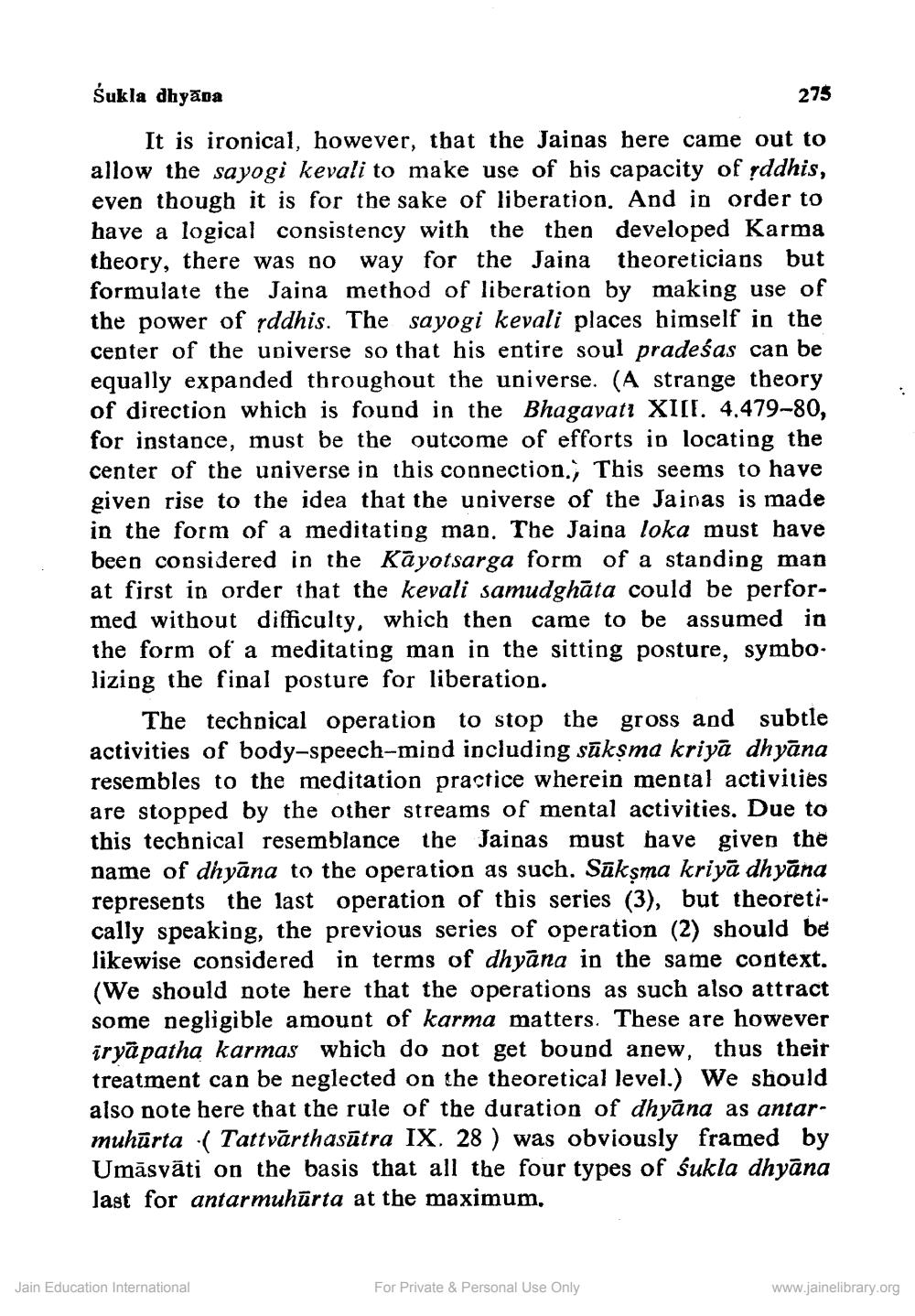________________
śukla dhyāna
275 It is ironical, however, that the Jainas here came out to allow the sayogi kevali to make use of his capacity of yddhis, even though it is for the sake of liberation. And in order to have a logical consistency with the then developed Karma theory, there was no way for the Jaina theoreticians but formulate the Jaina method of liberation by making use of the power of rddhis. The sayogi kevali places himself in the center of the universe so that his entire soul pradeśas can be equally expanded throughout the universe. (A strange theory of direction which is found in the Bhagavatı XIII. 4.479-80, for instance, must be the outcome of efforts in locating the center of the universe in this connection. This seems to have given rise to the idea that the universe of the Jainas is made in the form of a meditating man. The Jaina loka must have been considered in the Kāyotsarga form of a standing man at first in order that the kevali samudghāta could be performed without difficulty, which then came to be assumed in the form of a meditating man in the sitting posture, symbo. lizing the final posture for liberation.
The technical operation to stop the gross and subtle activities of body-speech-mind including sūksma kriya dhyāna resembles to the meditation practice wherein mental activities are stopped by the other streams of mental activities. Due to this technical resemblance the Jainas must have given the name of dhyāna to the operation as such. Sūkşma kriyā dhyāna represents the last operation of this series (3), but theorettcally speaking, the previous series of operation (2) should be likewise considered in terms of dhyāna in the same context. (We should note here that the operations as such also attract some negligible amount of karma matters. These are however iryāpatha karmas which do not get bound anew, thus their treatment can be neglected on the theoretical level.) We should also note here that the rule of the duration of dhyāna as antarmuhūrta :( Tattvārthasātra IX. 28 ) was obviously framed by Umāsyāti on the basis that all the four types of śukla dhyāna last for antarmuhūrta at the maximum,
Jain Education International
For Private & Personal Use Only
www.jainelibrary.org




